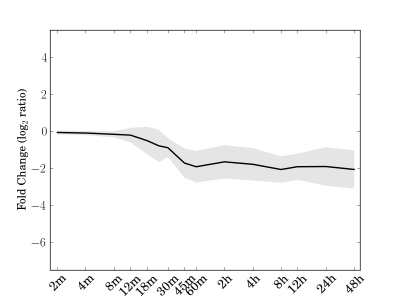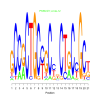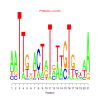Cre01.g016528.t1.1 haloacid dehalogenase-like hydrolase family protein
Details for Cre01.g016528.t1.1 - haloacid dehalogenase-like hydrolase family protein
GO Terms: NA
Go to Gene Page: Cre01.g016528.t1.1
Phytozome Genomic Region

|
Cre01.g042200.t1.1
Details for Cre01.g042200.t1.1 -
GO Terms: NA
Go to Gene Page: Cre01.g042200.t1.1
Phytozome Genomic Region

|
Cre03.g171100.t1.1 Chloroplast J-like domain 1
Details for Cre03.g171100.t1.1 - Chloroplast J-like domain 1
GO Terms: NA
Go to Gene Page: Cre03.g171100.t1.1
Phytozome Genomic Region

|
Cre04.g225050.t1.1
Details for Cre04.g225050.t1.1 -
GO Terms: NA
Go to Gene Page: Cre04.g225050.t1.1
Phytozome Genomic Region

|
Cre04.g231026.t1.1 chloroplast signal recognition particle component (CAO)
Details for Cre04.g231026.t1.1 - chloroplast signal recognition particle component (CAO)
GO Terms: GO:0005515
Go to Gene Page: Cre04.g231026.t1.1
Phytozome Genomic Region

|
Cre05.g244900.t1.1
Details for Cre05.g244900.t1.1 -
GO Terms: NA
Go to Gene Page: Cre05.g244900.t1.1
Phytozome Genomic Region

|
|
Cre06.g258733.t1.1 methylthioalkylmalate synthase-like 4
|
Cre07.g325718.t1.1
Details for Cre07.g325718.t1.1 -
GO Terms: NA
Go to Gene Page: Cre07.g325718.t1.1
Phytozome Genomic Region

|
Cre08.g375950.t1.1 Nuclear transport factor 2 (NTF2) family protein
Details for Cre08.g375950.t1.1 - Nuclear transport factor 2 (NTF2) family protein
GO Terms: GO:0005515
Go to Gene Page: Cre08.g375950.t1.1
Phytozome Genomic Region

|
Cre10.g426500.t1.2
Details for Cre10.g426500.t1.2 -
GO Terms: NA
Go to Gene Page: Cre10.g426500.t1.2
Phytozome Genomic Region

|
Cre10.g438650.t1.2 P-loop containing nucleoside triphosphate hydrolases superfamily protein
Details for Cre10.g438650.t1.2 - P-loop containing nucleoside triphosphate hydrolases superfamily protein
GO Terms: NA
Go to Gene Page: Cre10.g438650.t1.2
Phytozome Genomic Region

|
Cre10.g440450.t1.2 photosystem II reaction center PSB28 protein
|
Cre11.g469150.t1.2
Details for Cre11.g469150.t1.2 -
GO Terms: NA
Go to Gene Page: Cre11.g469150.t1.2
Phytozome Genomic Region

|
Cre12.g497850.t1.2
Details for Cre12.g497850.t1.2 -
GO Terms: NA
Go to Gene Page: Cre12.g497850.t1.2
Phytozome Genomic Region

|
Cre12.g515650.t1.2 eukaryotic translation initiation factor 3K
Details for Cre12.g515650.t1.2 - eukaryotic translation initiation factor 3K
GO Terms: NA
Go to Gene Page: Cre12.g515650.t1.2
Phytozome Genomic Region

|
Cre12.g522350.t1.2 Nucleotidylyl transferase superfamily protein
|
|
Cre12.g533550.t1.1 Pyruvate kinase family protein
|
Cre12.g556600.t1.2 aldehyde dehydrogenase 11A3
|
Cre13.g602350.t1.2 Aldolase-type TIM barrel family protein
Details for Cre13.g602350.t1.2 - Aldolase-type TIM barrel family protein
GO Terms: GO:0004425
Go to Gene Page: Cre13.g602350.t1.2
Phytozome Genomic Region

|
Cre14.g624850.t1.1
Details for Cre14.g624850.t1.1 -
GO Terms: NA
Go to Gene Page: Cre14.g624850.t1.1
Phytozome Genomic Region

|
Cre16.g655150.t1.2 Tetratricopeptide repeat (TPR)-like superfamily protein
Details for Cre16.g655150.t1.2 - Tetratricopeptide repeat (TPR)-like superfamily protein
GO Terms: NA
Go to Gene Page: Cre16.g655150.t1.2
Phytozome Genomic Region

|
Cre16.g677000.t1.2 Heat shock protein 70 (Hsp 70) family protein
Details for Cre16.g677000.t1.2 - Heat shock protein 70 (Hsp 70) family protein
GO Terms: NA
Go to Gene Page: Cre16.g677000.t1.2
Phytozome Genomic Region

|
Cre17.g721700.t1.2 Pentapeptide repeat-containing protein
Details for Cre17.g721700.t1.2 - Pentapeptide repeat-containing protein
GO Terms: NA
Go to Gene Page: Cre17.g721700.t1.2
Phytozome Genomic Region

|
|




Comments